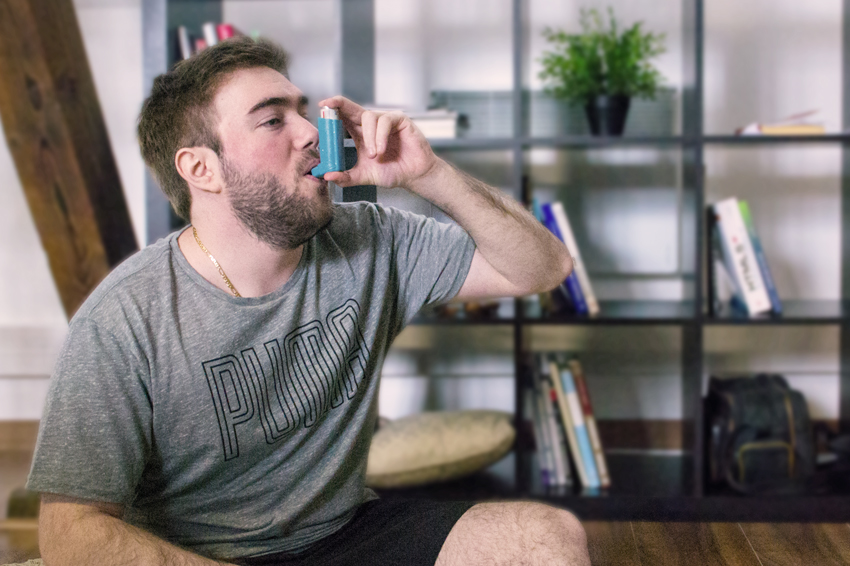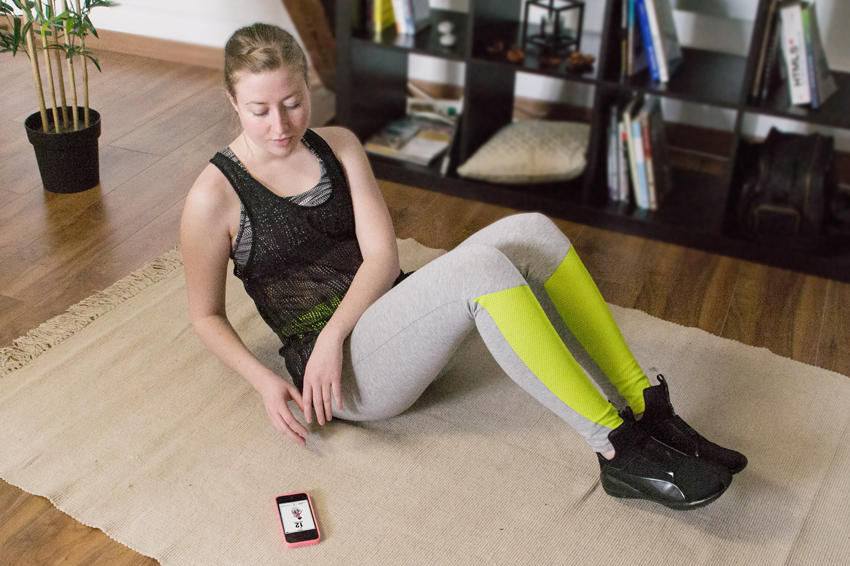Do you suffer from asthma and think that working out isn’t for you? Think again! Although this disease has long been viewed as a setback when it comes to exercise, things have changed. Working out is now highly recommended, and the FizzUp trainer will tell you why in honor of World Asthma Day.
Asthma is a chronic respiratory disease that’s due to bronchi hypersensitivity to certain allergens or substances (pollen, mold, smoke, etc.). According to the World Health Association, around 235 million people suffer from asthma worldwide.

Asthma can manifest itself in many ways, most often through an acute shortness of breath, especially during physically demanding activity. But a persistent cough, a suffocating feeling in your rib cage, wheezing and constant difficulty breathing are all negative side effects of this disease.
Asthma can also be diagnosed depending on how it’s triggered. There are certain types of asthma that are sometimes triggered under specific conditions: workplaces, coming into contact with an animal, etc. This is called intermittent asthma. For instance, during exercise or recovery, attacks from so-called “exercised-induced asthma” can occur.
In other cases, people can suffer from asthma all year round. When this type is persistent and has varying degrees of severity, it’s known as mild, moderate or severe persistent asthma. There are often many causes to blame: genetic inheritance, allergic reactions or reactions to irritating substances like tobacco smoke, especially.
Having asthma doesn’t mean you can’t be physically active on a regular basis… quite the opposite! Many people who suffer from asthma think that exercise isn’t recommended for them. But when they follow a few simple guidelines or occasionally take medication to prevent attacks, physical activity can be something they enjoy. The good news: exercise-induced asthma is preventable and treatable.

In those who suffer from this disease, their bronchi are weakened by chronic inflammation. They’re abnormally sensitive to certain factors such as exercise, cold, drought or air pollution. When you participate in a physical activity, all these factors can irritate the bronchi. When this happens, they contract and produce mucus, which clogs your airways and prevents air from getting into your lungs. This is what’s known as an asthma attack. There are a few habits you can get into and precautions you can take to make your physical activity easier when you have asthma.
Many people who suffer from asthma have become top-level athletes, which goes to show that working out and asthma can go hand in hand. What’s their secret? A solid understanding of their condition, a lot of motivation, fitness training and above all, religiously sticking to good habits that make working out and asthma a successful combination.
Seeking the advice of a medical professional is a must before you take up a new physical activity. Talk to your doctor and ask them your questions or tell them about any discomfort you may have been experiencing. Although working out with asthma is a challenge, they can give you the right guidance and help you choose a physical activity that’s right for you and suggest the appropriate treatment.
The onset of exercised-induced asthma is triggered by many factors, such as air temperature and humidity. Cold and dry weather conditions make physical activity difficult for those suffering from asthma because they can easily cause asthma attacks. There are other environmental factors you should take into consideration, such as pollution, viral infections or the number of allergens in the air such as pollen. Exercising at home can be a great way to bring together working out and asthma, especially when it’s cold outside or when the air is highly polluted.
Before a FizzUp workout, we usually recommend measuring your breath before and after you exercise with a peak flow meter. Use its measurements to find out your peak expiratory flow and to see how your condition evolves in order to decide if you’re fit enough to participate in a physical activity that day. If you’re able to work out, try using a preventer inhaler 10 to 15 minutes before exercise and always start with a serious warm-up, like the one included in your FizzUp program, and get a bronchodilator, which is vital if you have trouble breathing while exercising.

While working out, it’s always important to know your body and how to exercise in such a way so that you can keep discomfort and injuries at bay. This is even more vital for people who suffer from asthma. Being able to recognize the signs of an exercised-induced asthma attack is crucial: trouble breathing and tightening in your chest, wheezing or even a persistent cough after you’re done working out. The best way to avoid the onset of these symptoms is to start with an easy workout that progressively becomes more challenging and not to overestimate your physical abilities by pushing your limits.
Unless your doctor says otherwise, working out and asthma are actually pretty compatible. Regular physical activity is even recommended for anyone with asthma because you can regain confidence in your abilities, have fun and relieve stress. So what are you waiting for? Follow the FizzUp trainer’s advice and listen to your doctor before you start your next workout!
Join the 7 million users already registered on FizzUp
Join us